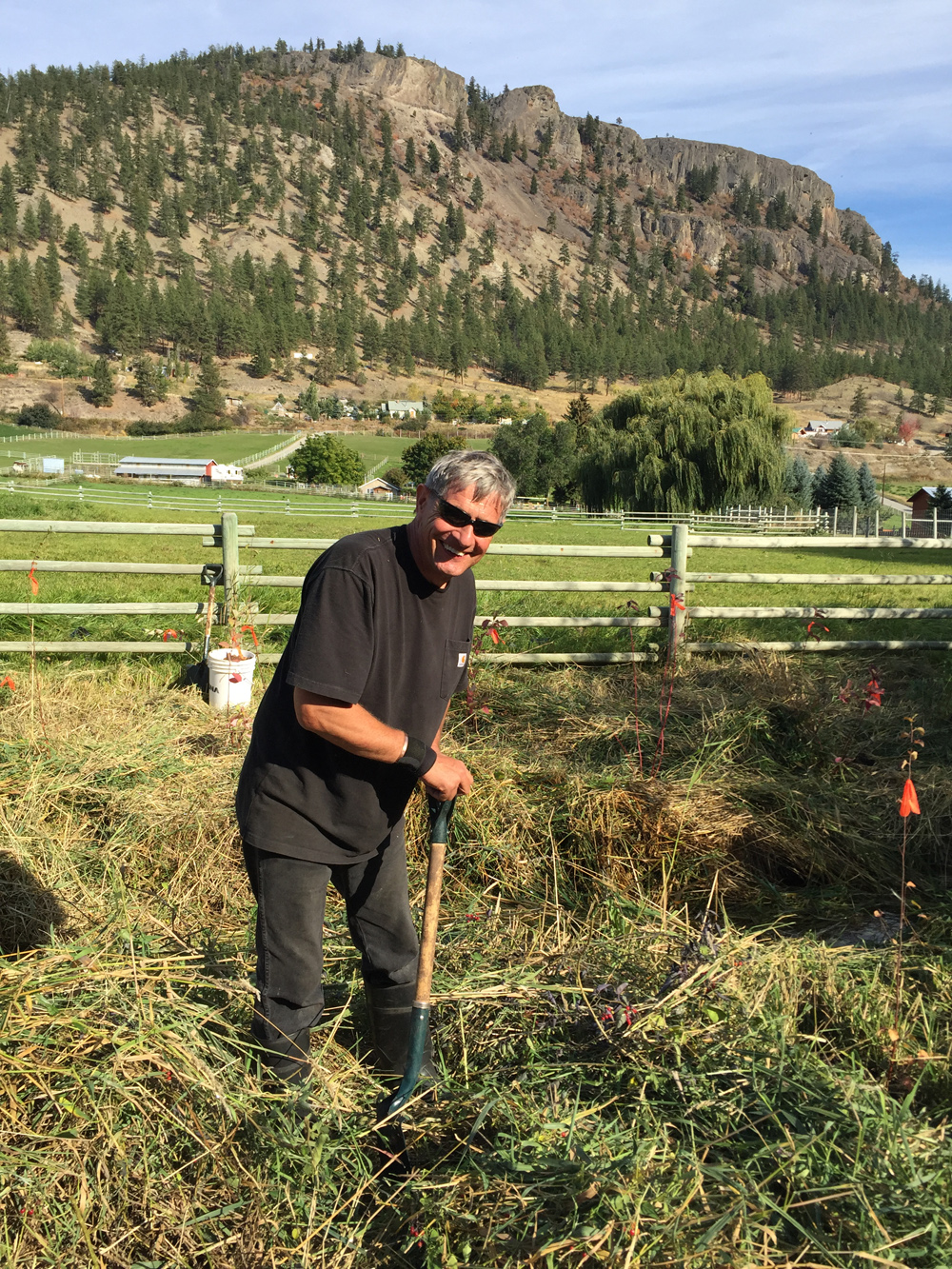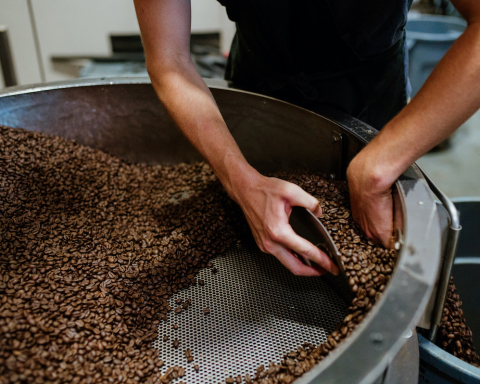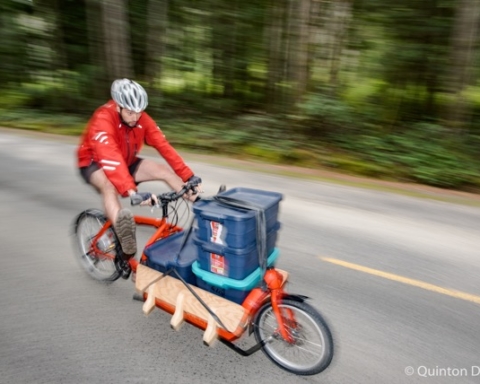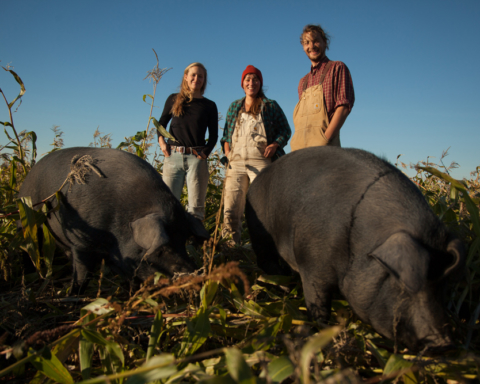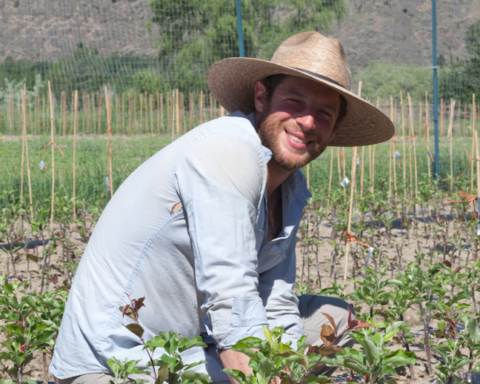Tanya Brouwer
Agricultural activities are often blamed for the demise of the planet’s environmental systems. It is not uncommon to hear about deforestation, drained wetlands, and dying grasslands when referencing agriculture. Yet the Canadian Organic Standard specifically states that “organic agriculture should sustain and enhance the health of soil, plants, animals, humans and the planet as one and indivisible.” This puts organic farmers in a unique and invaluable position as environmental stewards of some of the last large tracts of fertile land in the country.
Unfortunately, this noble mandate, while inspirational on paper, lacks the specific steps that organic farmers need to turn this goal into reality. It becomes necessary, then, for organic stewards to first turn inwards and understand the local, biogeoclimatic zone in which they operate. With this understanding, it becomes easier for farmers to recreate or retain habitat elements of the zone’s numerous ecosystems in order to bolster often dwindling populations of native species. At the same time, a knowledge of regional ecosystems allows organic operators to minimize farmer/wildlife conflict. The result is a scenario where farmers and wildlife form mutually beneficial relationships.
For example, many of the South Okanagan’s organic operations lie within the Bunchgrass biogeoclimatic zone (BG). Very generally speaking, this zone is characterized by moderate winters, hot summers, and very little precipitation. Grasses are the dominant vegetation, interspersed with Rabbitbrush, Big sagebrush, and Antelope brush among others. The wildlife species native to this zone, including birds, bats, mammals, and insects, have evolved with the climate and resultant plant life and rely upon these ecosystems to fulfil certain life cycles. Agricultural plant species, on the other hand, are not part of this coevolution and, alone, can disrupt natural life cycles forcing some native populations to diminish and others to become perceived ‘pests’.
The good news: it is possible for organic farmers to coexist with native systems within the farmed environment without decreasing production goals. For instance, the South Okanagan is home to many snakes. The rattlesnake and gopher snake are some of the most well-known and misunderstood. Through persecution and habitat loss their numbers have dropped significantly. What many farmers fail to realize is that snakes, protected under the BC Wildlife Act, are an organic farmer’s friend for effective and ‘approved’ rodent control, so populations should be encouraged in a safe manner.
In the South Okanagan, rocky slopes are often used as denning sites. These should be maintained with a buffer of natural habitat. In order to prevent farmer/snake conflict, habitat hiding spots like piles of rocks or wooden boards can be created and placed away from busy work areas. If all else fails and conflict cannot be avoided, particularly with rattlesnakes, a farmer may opt to install snake barrier fencing.
Wetlands are also a vital element of the dry BG zone and support at-risk species like the Blotched tiger salamander and the Great Basin spadefoot toad. Healthy wetlands help farmers by reducing mosquito populations, recharging aquifers, and minimizing flooding to non-wetland areas. With over 85% of the Okanagan’s wetlands destroyed, farmers would be wise to protect them. Ensuring organic fungicides are applied on low wind days avoids negatively impacting amphibians. Exclusion fencing is a good first step for livestock operators and appropriate buffers with native plantings are also recommended in non-livestock settings. Wetland re-creation is another option in fields where wetlands have been drained.
Admittedly, many organic farmers, particularly those growing fruit, might be hard pressed to find room for a relationship with birds. Many birds, however, are voracious eaters of insects that are also detrimental to fruit crops. And, like other native species, numerous populations of native birds are on the decline due to human related habitat loss and competition from non-native species like the European starling. For these reasons, the Lewis’s woodpecker, found in the South Okanagan, is considered threatened. To encourage its comeback, large standing dead or live Ponderosa pine or Cottonwood trees should remain intact as they provide important habitat for this species (BOX). Ensuring that vineyard netting is tight and not hanging loosely will prevent stolen grapes and inadvertent bird catch. As a final incentive, Lewis’s woodpeckers, like all migratory birds, are protected under the federal Migratory Birds Convention Act so meddling with this species and many others is considered illegal.
Of course, the tiny but mighty native pollinators should not be forgotten. Native species of bees, flies, moths, butterflies, and beetles are responsible for one of every three bites of food we take. Unfortunately, many of these populations are also on the decline. This is where native plants are especially important. In the South Okanagan, for example, the Mining bee is the first to emerge in the spring and benefits from Yarrow’s early bloom. As another example, the female Northern Checkerspot will lay her eggs on the underside of Rabbitbrush leaves. By planting a hedgerow or strip of native plants (or maintaining existing native habitat), organic farmers will help preserve species that are vital to crop success.
Obviously, many of these projects require some financial input. Additionally, learning this information requires time that many organic farmers simply do not have. Several communities and regions have stewardship societies with experts that will assist farmers in identifying critical habitat on their property. These groups are also aware of potential grants and other funding that can help fulfil conservation goals. Okanagan Similkameen Stewardship, Delta Farmland and Wildlife Trust, the Kootenay Conservation Program, the GOERT society on Vancouver Island, and the Environmental Farm Plan are great regional programs that farmers can access.
At the end of the day, organic farmers are also ecologists, managing the interrelationships of soil, water, plants, and animals to create a thriving, healthy operation. While the specific knowledge of local ecosystems may be new to some, it is likely that the nurturing of these ecosystem elements is a long time practice for many. Learning the details of a region’s biogeoclimatic zone is an extra step that will ensure the organic farmer is well on the way to fulfilling the organic standard’s mandate to protect Canada’s environment.
BIOGEOCLIMACTIC ZONE
BC is divided into 14 biogeoclimatic zones. Zones are large geographic areas with relatively uniform climate. They are named after 1, 2, or 3 of the dominant climax species. Spruce-Willow-Birch, Mountain Hemlock and Coastal Douglas-fir are some examples. Other provinces use different classification systems.
WILDLIFE PROTECTION
BC Wildlife Act: protects virtually all vertebrates from direct harm, except as allowed by regulations (e.g. hunting). Anyone who kills or harms an endangered or threated species can be fined $500,000 and three years in jail.
Migratory Birds Convention Act: federal legislation that protects all of Canada’s migratory birds, including their nests and eggs, unless allowed by regulations.
Large standing dead or live trees that provide valuable habitat for the conservation of wildlife are referred to as Wildlife Trees.
Tanya Brouwers is the Ecostudies coordinator for the Okanagan Similkameen Conservation Alliance. She also is an organic verification officer and a farmer. For any questions related to this article or to book a workshop, email her at ecostudies@osca.org.
Photo: Keith Manders, rancher, helping Okanagan Similkameen Stewardship plant native trees and shrubs to enhance a riparian buffer (along Aeneas Creek) on Garnet Valley Ranch in Summerland. Credit: Okanagan Similkameen Stewardship


